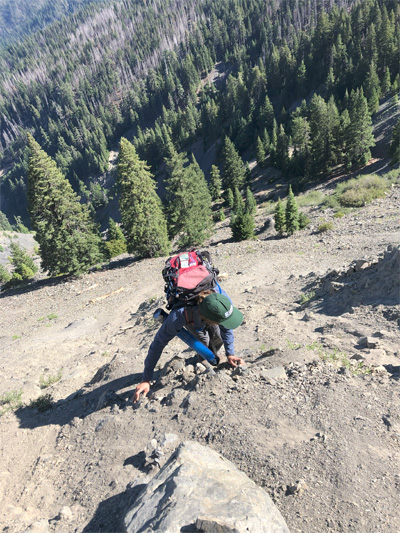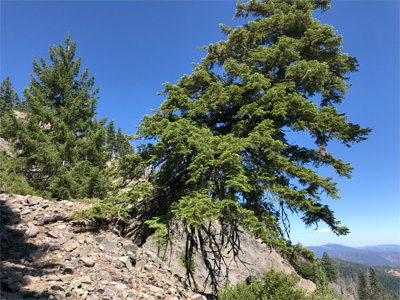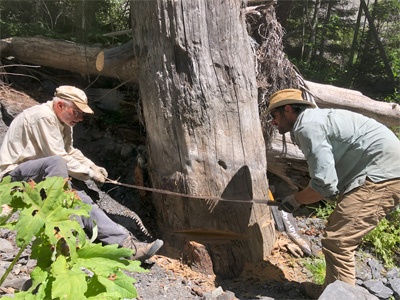1 May 2024–Trees caught up in two prehistoric, devastating landslides in the Coast Ranges of northern California suggest that the landslides could be linked to major earthquakes, including the magnitude 7.9 1906 San Francisco earthquake, researchers said at the Seismological Society of America (SSA)’s 2024 Annual Meeting.

In the Mule Slide landslide, telltale trauma in a tree caught in the landslide pinpoints the age of the landslide to 1906. At a second landslide called Red Lassic, trees buried in debris help date the landslide to 933 C.E., which falls within the age range of the antepenultimate earthquake on the Cascadia Subduction Zone. The precise age of the 933 C.E. debris avalanche could narrow down the date of this earthquake from a range of 116 years to one year.
The timing provided by the tree data can help researchers determine whether the two massive landslides were caused by climate factors such as significant rainfall or an earthquake event, said Harvey Kelsey, a geologist at California State Polytechnic University, Humboldt.
The sites could also shed light on how earthquakes occur in the Cascadia Subduction Zone, which has a history of destructive, magnitude 9 earthquakes. “We really don’t know if Cascadia Subduction Zone earthquakes follow a zipper effect, and rupture along the whole margin from northern California to southern British Columbia, or whether they rupture in segments,” Kelsey explained. “But the more ages we have on individual earthquakes, the better we’re going to be able to answer that question.”
Kelsey came across the landslide sites when he was doing his Ph.D. fieldwork in the 1970s. “I put them to the back of my mind, but once I stopped teaching, I thought one of my hobbies could be to look at these landslides again,” he said.
At the same time, he added, “there was now a lot of interest in whether the Cascadia Subduction Zone could generate coseismically large landslide failure.”
He approached dendrochronologist Jessie Pearl, then a postdoc at the U.S. Geological Survey, to see if she might be interested in looking at the trees caught in the landslides, to see if they might yield any precise dates.

At Mule Slide, she found trees with traumatic resin ducts. “When a tree experiences some sort of blunt trauma, either because it’s hit by something or it’s moved, the tree will flush an area with resin” as a deterrent against insects or disease, said Pearl, now at The Nature Conservancy.
The trees on one of the Coast Ranges landslides all have traumatic resin ducts, Pearl discovered, while trees nearby but off the landslide block do not. Her analysis concluded that the traumatic resin ducts appeared in 1906, the year of the San Francisco earthquake.
While the date doesn’t absolutely confirm that the landslide was caused by the 1906 event, it adds more evidence in favor of a seismic cause, said Kelsey. The largest storms of record in this area of California haven’t triggered similar sized landslides, he noted, and the high elevation and steep slopes in the Coast Ranges could amplify seismic waves to cause a landslide.

At the Red Lassic, Pearl examined trees that “were completely buried by the debris material and we postulate were killed instantly,” she said.
“For those trees, we’re looking at the death date, or the final year of growth right behind the bark,” she said. A buried tree yielded a death date of 933 C.E, which coincides with other paleoseismic records in northern Humboldt Bay that indicate a major earthquake occurred there between 850 and 966 C.E.
Kelsey and Pearl said the trees are an unlikely buried treasure, remaining mostly intact over hundreds of years due to their location in such a remote, steep setting.
